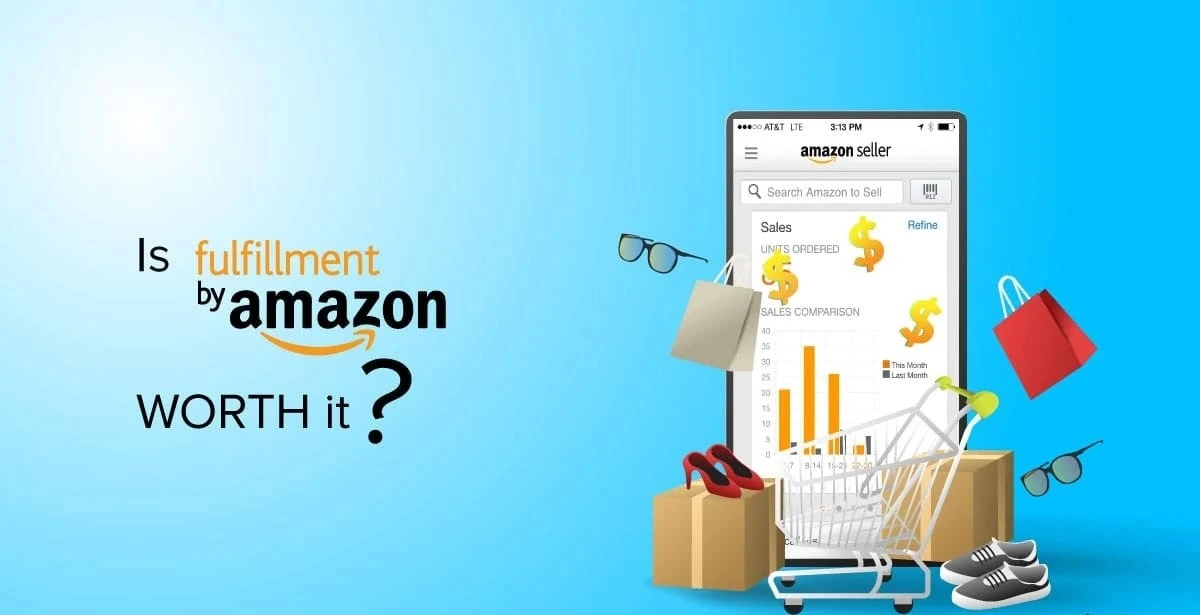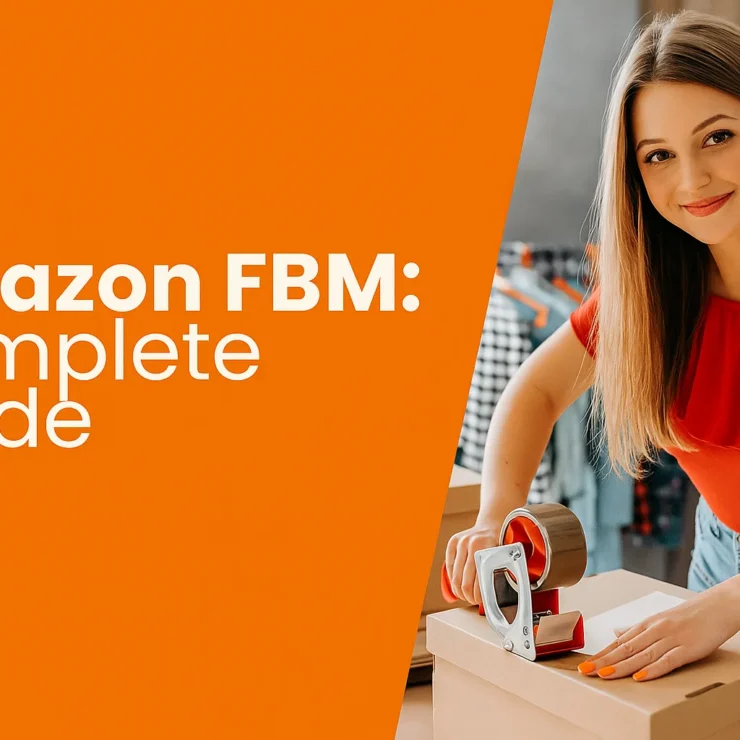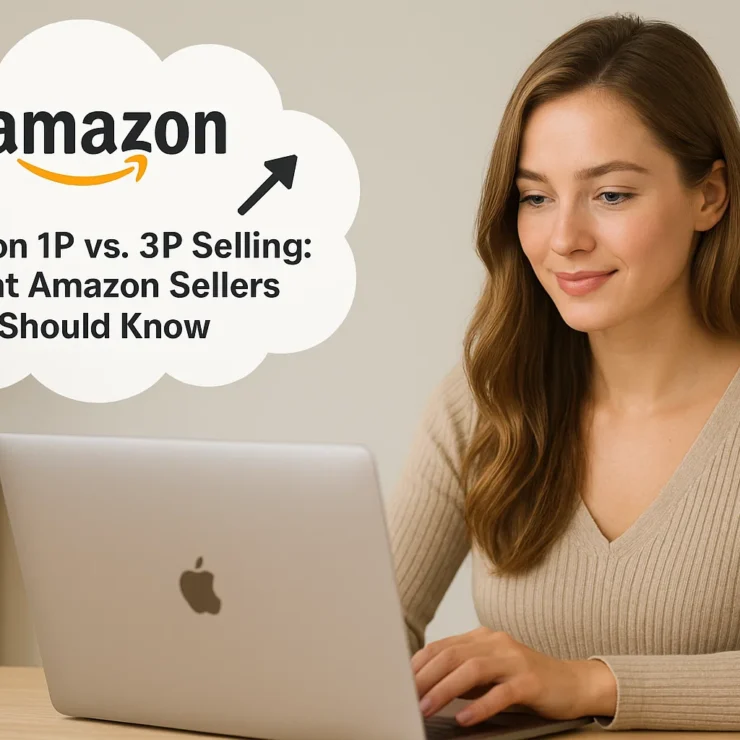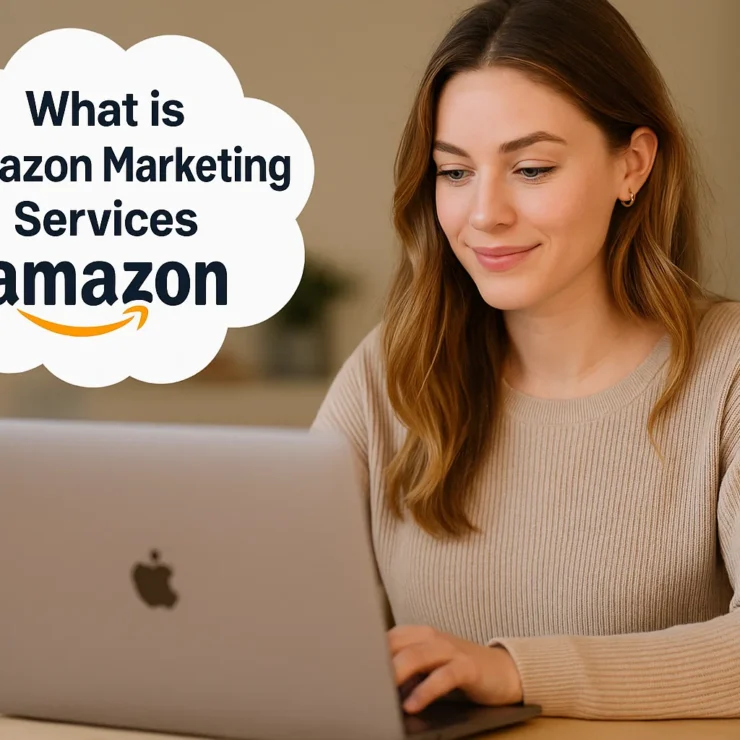Amazon FBA (Fulfillment by Amazon) has revolutionized e-commerce since its launch in 2006. But with rising competition, increasing fees, and new marketplace alternatives like Walmart FBA and TikTok Shop, many sellers are questioning: Is Amazon FBA still worth it in 2025?
The answer isn’t simple. While Amazon remains the world’s largest e-commerce platform with $638 billion in net sales in 2023 (Statista), the landscape has become more challenging. Over 60% of Amazon sales come from third-party sellers, with FBA accounting for 89% of those sellers. This guide will provide an in-depth analysis of Amazon FBA’s viability in 2025, covering profitability, competition, costs, and alternatives.
How Much Do Amazon Sellers Make?
One of the biggest questions aspiring sellers ask is: “How much can you realistically make selling on Amazon?” The answer depends on several factors, including product selection, competition, pricing strategy, and marketing efforts. However, let’s break down the numbers based on real seller data.
Average Amazon Seller Earnings
Recent surveys and reports provide a clear picture of how much Amazon sellers make:
Nearly 88% of Amazon sellers earn $1,000 to $25,000 per month in sales.
5% of sellers generate over $25,000 per month.
6% of sellers make $50,000+ in monthly sales.
These figures demonstrate that while Amazon FBA offers significant earning potential, success varies based on experience, niche selection, and business strategy.
Profit Margins of Amazon Sellers
Understanding revenue is important, but profitability is what truly matters. The majority of sellers on Amazon achieve healthy margins:
56% of sellers report a profit margin of at least 20%.
28% of sellers have profit margins above 20-50%.
13% are currently Not profitable.
Higher profit margins are often linked to private label products, effective branding, and premium pricing strategies.
How Long Does It Take to Make Money on Amazon?
Selling on Amazon isn’t a get-rich-quick scheme. It requires time and effort to turn a profit. Based on seller insights:
63% of sellers become profitable within the first year.
20% report profitability within the first three months.
Only 8% say it takes more than two years to become profitable.
New sellers who start with thorough product research, optimized listings, and effective marketing tend to see faster results.
Factors That Influence Amazon Seller Earnings
Several elements determine how much an Amazon seller can make, including:
Product Niche: High-demand, low-competition products generate better margins.
Fulfillment Model: FBA (Fulfillment by Amazon) can increase sales but comes with fees.
Marketing Efforts: Running PPC ads and optimizing listings can boost revenue.
Customer Reviews: Higher ratings and positive feedback lead to better conversions.
Pricing Strategy: Competitive pricing helps maintain profitability while attracting buyers.
Pros and Cons of Selling on Amazon
Selling on Amazon offers massive potential, but it also comes with challenges. Whether you’re considering starting an Amazon FBA business or scaling an existing one, it’s crucial to weigh the pros and cons before diving in.
✅ Pros of Selling on Amazon
1. Access to Millions of Buyers
Amazon has over 310 million active customers worldwide, making it the largest eCommerce platform. Unlike running your own website, where you have to drive traffic, Amazon provides instant access to a massive audience ready to buy.
2. Amazon Fulfills Orders for You (FBA Advantage)
With Fulfillment by Amazon (FBA), sellers can store products in Amazon’s warehouses, and Amazon takes care of:
✔ Picking, packing, and shipping orders.
✔ Customer service and returns.
✔ Faster Prime shipping (which boosts conversions).
FBA saves sellers time and effort, allowing them to focus on scaling their business.
3. High Earning Potential
Amazon sellers can make five, six, or even seven figures annually.
60% of sellers earn $1,000 – $25,000 per month.
20% of sellers generate over $25,000 per month.
Top sellers make $100,000+ per month.
With the right product selection, pricing, and marketing, selling on Amazon can be highly profitable.
4. Low Upfront Marketing Costs
Unlike Shopify or eBay, Amazon already has millions of daily visitors. If you optimize your product listings (using high-quality images, compelling descriptions, and keywords), you can get organic sales without heavy ad spending.
5. Passive Income Potential
Once you launch and rank a successful product, sales can become semi-passive. With Amazon handling fulfillment and customer service, you don’t have to manage every transaction manually.
❌ Cons of Selling on Amazon
1. High Competition
Amazon has millions of sellers, and competition in popular niches is intense. Many sellers engage in price wars, which can reduce profit margins. To stand out, you need unique branding, optimized listings, and a well-planned pricing strategy.
2. Amazon Fees Can Cut into Profits
Amazon charges various fees, including:
Referral fees (15%) on each sale.
FBA fees (storage & fulfillment costs).
Subscription fee ($39.99/month for a professional account).
These fees mean you must price products strategically to maintain profitability.
3. No Control Over the Platform
Amazon can:
Change its policies at any time (affecting fees, rankings, and rules).
Suspend seller accounts for policy violations.
Hold funds for investigations.
Relying solely on Amazon can be risky, so many sellers diversify by selling on their own Shopify store or other marketplaces.
4. Returns Challenges
Amazon’s customer-first policies mean sellers often bear the cost of returns. Some buyers abuse the system, returning used or damaged products, which can lead to losses.
5. Constant Need for PPC Advertising
Organic rankings take time, so Pay-Per-Click (PPC) ads are essential for new sellers. Running ads effectively requires budgeting and optimization skills—otherwise, you could spend more than you earn.
How Much Money Do You Need to Start Selling on Amazon?
The amount you need to start selling on Amazon depends on your business model. Some sellers start with less than $500, while others invest $5,000+ to build a brand.
Here’s a breakdown of estimated startup costs based on different selling models:
🛒 1. Retail Arbitrage / Wholesale (Budget: $500 – $1,500)
Best for: Beginners who want to start with a low budget and make money quickly.
| Expense | Estimated Cost | Explanation |
|---|---|---|
| Amazon Professional Seller Subscription | $39.99/month | Required for serious sellers to access bulk listing & advertising. |
| Inventory (Retail Arbitrage or Wholesale) | $300 – $1,000 | Buying discounted products from local stores or wholesalers. |
| Shipping to Amazon FBA Warehouses | $50 – $200 | Costs depend on product size, weight, and distance. |
| Amazon Referral Fees | 15% of sale price | Amazon charges a commission for each item sold. |
| FBA Fulfillment Fees | $3 – $5 per unit | Amazon handles packing, shipping, and customer service. |
| Optional Advertising (Amazon PPC) | $100 – $300 | Helps products gain visibility faster. |
✅ Pros: Low upfront costs, quicker profits, and less risk.
❌ Cons: More manual work (sourcing), lower scalability compared to private label.
🏷️ 2. Private Label (Budget: $3,000 – $5,000+)
Best for: Sellers looking to build a brand and long-term business.
| Expense | Estimated Cost | Explanation |
|---|---|---|
| Amazon Professional Seller Subscription | $39.99/month | Essential for bulk selling and access to Amazon advertising tools. |
| Product Manufacturing (MOQ + Sample Costs) | $1,500 – $3,000 | Suppliers require minimum order quantities (MOQ) to produce custom products. |
| Shipping & Freight (Supplier to Amazon FBA) | $500 – $1,500 | Depends on product size and shipping method (air vs. sea). |
| FBA Fulfillment Fees | $3 – $6 per unit | Amazon packs, ships, and handles returns. |
| Amazon Referral Fees | 15% of sale price | Standard commission paid to Amazon per sale. |
| Product Photography | $200 – $500 | High-quality images are essential for conversions. |
| Brand Registry & Trademark | $350 – $800 | Recommended for private label sellers to protect their brand. |
| Amazon PPC Advertising | $500 – $1,500 | Crucial for ranking your product on page 1. |
✅ Pros: Higher profit margins, full control over branding, long-term scalability.
❌ Cons: Higher upfront costs, longer time to become profitable.
💸 3. Amazon Dropshipping (Budget: $300 – $1,000)
Best for: Sellers who want a low-risk, inventory-free approach.
| Expense | Estimated Cost | Explanation |
|---|---|---|
| Amazon Professional Seller Subscription | $39.99/month | Needed to access bulk listing and buy box advantages. |
| Product Research Tools | $50 – $200 | Software like Jungle Scout or Helium 10 helps find winning products. |
| Supplier Deposits (If Required) | $100 – $500 | Some suppliers require deposits for bulk orders. |
| Amazon Referral Fees | 15% of sale price | Amazon takes a cut from each sale. |
| Dropshipping Software (Optional) | $50 – $100/month | Tools like AutoDS or DSers help automate order processing. |
| Advertising (Amazon PPC) | $200 – $500 | Since dropshipping is competitive, ads help get initial sales. |
✅ Pros: Low startup costs, no inventory risk, easy to start.
❌ Cons: Lower profit margins, supplier dependency, strict Amazon policies.
💡 Key Takeaways
✔ Retail Arbitrage: $500+ – Fastest way to start, but requires manual work.
✔ Private Label: $3,000+ – Best for long-term profits, but needs more investment.
✔ Dropshipping: $300+ – Low-risk, but highly competitive with thin margins.
If you’re on a small budget, retail arbitrage or dropshipping can get you started. If you’re serious about building a brand, private label is the best option in 2025.
FAQ'S
1. How much does it cost to start selling on Amazon?
The startup cost varies based on the selling model you choose. Some sellers start with as little as $500, while others invest $5,000 or more for private label businesses. Key expenses include inventory costs, Amazon fees, marketing, and shipping.
2. How much can you make selling on Amazon?
Earnings depend on product selection, competition, and marketing efforts. According to recent reports, 50% of Amazon sellers make between $1,000 and $25,000 per month, with 20% earning over $25,000 monthly.
3. How long does it take to become profitable?
Most Amazon sellers become profitable within their first year. About 22% turn a profit in under 3 months, while 58% are profitable within 12 months. Private label businesses may take longer due to higher upfront investments.
4. Is Amazon FBA still worth it with all the fees?
Yes, but it depends on your pricing strategy and product selection. Amazon fees, such as referral fees, fulfillment fees, and storage costs, can add up, so sellers must factor them into their pricing. Many sellers use profit calculators to determine their margins.
5. Can you sell on Amazon with no experience?
Yes! Many sellers start without prior eCommerce experience. Amazon offers resources like Seller University, and third-party tools like Jungle Scout or Helium 10 can help with product research and optimization.
6. What is the best way to start selling on Amazon in 2025?
The best way depends on your budget and goals. Private label selling offers long-term brand building, while retail arbitrage and wholesale require lower upfront costs and allow for quicker entry into the marketplace.
7. What are the biggest challenges of selling on Amazon?
Some of the biggest challenges include high competition, strict Amazon policies, inventory management, and fluctuating ad costs. Sellers who continuously adapt and optimize their strategies are more likely to succeed.
8. Do I need an LLC to sell on Amazon?
No, but it is recommended. Many sellers start as sole proprietors and later transition to an LLC for liability protection and tax benefits. Consulting with a tax professional is a good idea.
9. Can I sell on Amazon while working a full-time job?
Yes! Many Amazon sellers start as side hustlers and later transition to full-time once they scale their business. Using Amazon FBA reduces the time spent on fulfillment, making it easier to manage.
10. Is selling on Amazon saturated?
While competition is growing, Amazon’s customer base is also expanding. The key to success is finding profitable niches, optimizing listings, and using advertising strategically. There are still many opportunities for new sellers in 2025!
Is Amazon FBA Worth It? Final Thoughts
While competition has increased over the years, Amazon FBA remains a profitable opportunity for new and experienced sellers alike. If you sell in the U.S. marketplace, you’re actually entering one of the least competitive Amazon markets compared to emerging international marketplaces.
Competition is a natural part of any business. In fact, competition is a positive sign—it means there’s demand for your products. Nearly 600,000 new sellers register on Amazon every year. While this number may seem overwhelming, keep in mind that Amazon’s market share continues to expand with more consumers shopping online than ever before.
Rather than sellers fighting over a fixed pool of customers, they are sharing a growing marketplace. New sellers can still succeed if they focus on smart product selection, pricing strategies, and effective marketing.
However, success on Amazon requires proper research and planning. Jumping into a product just because it’s “trending” or looks easy to sell can lead to losses. Take the time to analyze market trends, calculate costs, and evaluate competition before making a decision.
Contact Us for Tailored Solutions – Stores Automation
Ready to transform your Amazon store and achieve big wins. Sign Up at Stores Automation for personalized solutions that leverage the power of automation for your business. Reach out to us at 302-204-8244 or via email at info@storesautomation.com. For more information, visit our Contact Us page. Embark on the path to e-commerce success with Stores Automation – where small changes lead to big wins!





